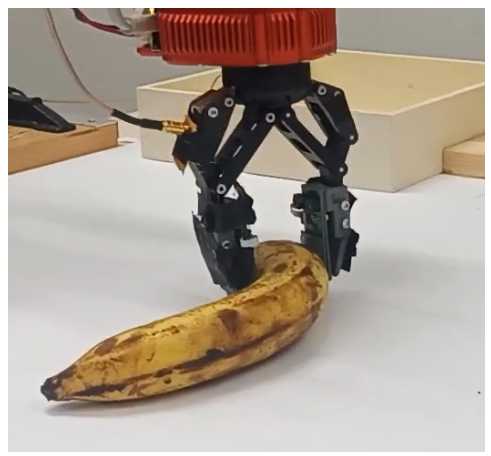Ubiquitous Sensing Lab
 The Ubiquitous Sensing (USE) Lab, jointly established by Klagenfurt University and Silicon Austria Labs, aims at tackling major research challenges including:
The Ubiquitous Sensing (USE) Lab, jointly established by Klagenfurt University and Silicon Austria Labs, aims at tackling major research challenges including:
- Seamless integration in the environment
- Autonomous and networked data collection and information extraction
- Ease of usage, versatility, and dependability
The USE Lab is part of the Faculty of Technical Sciences at the University of Klagenfurt (AAU) as well as in the Sensor Systems Division at Silicon Austria Labs and therefore offers extensive opportunities for interdisciplinary cooperation beyond the laboratory boundaries. The faculty @ AAU was founded in 2007 and hosts the departments of information and communication engineering, computer science and mathematics, with about 30 professors. The USE Lab further contributes to the university’s key research strength “Networked and Autonomous Systems” covering various fundamental research topics as well as deployments in applications such as robotics and multi-UAV (Unmanned Aerial Vehicle) systems, smart grids, transportation and communication systems, and intelligent automation/production systems.
 The USE Lab addresses key issues related to sensor systems for future robotics applications. In particular, the lab investigates novel additively manufactured electronic components for robots (sensors, actuators, power supply, bendable and stretchable electrical connections, …) in connection with the “ubiquitous sensing” approach, i.e. a massive “sensorization” of robots, automation systems and intelligent environments. Biological systems serve as a model here; for example, humans have around 109-1011 million receptors in their bodies. It is therefore obvious that future robotic systems will only be able to perform similarly complex tasks as humans if they also have a similarly high number of sensors. Using modular sensor solutions, especially for soft robotics, sustainable sensor solutions and new system concepts for robot applications (integrated wiring, energy harvesting, …), new scientific findings on the advantages of “ubiquitous sensing”, e.g. in the areas of human-robot interaction, active assisted living, service robotics, manipulation of non-rigid objects, interaction in unstructured, confusing environments and active perception are expected.
The USE Lab addresses key issues related to sensor systems for future robotics applications. In particular, the lab investigates novel additively manufactured electronic components for robots (sensors, actuators, power supply, bendable and stretchable electrical connections, …) in connection with the “ubiquitous sensing” approach, i.e. a massive “sensorization” of robots, automation systems and intelligent environments. Biological systems serve as a model here; for example, humans have around 109-1011 million receptors in their bodies. It is therefore obvious that future robotic systems will only be able to perform similarly complex tasks as humans if they also have a similarly high number of sensors. Using modular sensor solutions, especially for soft robotics, sustainable sensor solutions and new system concepts for robot applications (integrated wiring, energy harvesting, …), new scientific findings on the advantages of “ubiquitous sensing”, e.g. in the areas of human-robot interaction, active assisted living, service robotics, manipulation of non-rigid objects, interaction in unstructured, confusing environments and active perception are expected.
The USE-Lab is organized in two research tracks. The research track RT1 “Sensor System Integration and Fabrication” will close the gap along the value chain between sensor and integration technology and the use of these technologies in robotics and autonomous systems. Through the close connection to RT2, this bridge will enable a faster transition from laboratory experiments to concrete applications in the future. RT1 will investigate the application of new technologies and materials in additive manufacturing as well as the integration and fabrication of sensor and actuator systems utilizing technologies of printed electronics for functional layers for thin, flexible (bendable) and/or stretchable sensors and hybrid systems of integrated circuit (“chips”) and printed electronics. The integration of printed energy harvester and energy storage components will also be of interest for future systems.
The research track RT2 “Sensor Modeling, Simulation and Optimal Design” will focus on model-based approaches for sensor development and optimization and thus realizing sensor system solutions for robotics applications utilizing integration and fabrication technologies investigated in RT 1. The integration and production technologies investigated in RT1 are used for this purpose. In addition, semantic representations and annotations of sensor data, which are of high relevance for the efficient utilization of sensor data in large scale ubiquitous sensing scenarios, are considered. Novel concepts and theories for low-power smart sensors and sensor networks including wireless communication, advanced signal processing (both model-based and machine learning based) and advanced pre-evaluation of sensor data are investigated. A particular focus is on partially or fully autonomous operation, which is advantageous in robotics and autonomous systems. Realistic simulation environments comprise and address different levels of integration including communication and pre-processing of data (on chip, package & system level). The AAU’s research topic “Robust Sensor Design and Optimization” forms an ideal basis for the simulations to be carried out in the USE Lab RT2.
Contact: Prof. Hubert Zangl
Contact email: use-office [at] aau [dot] at
Related projects:
PATTERN-Skin – Modular Multi-Modal Proximity and Tactile Perception Skin
Publications
| [1] | Hubert Zangl, Christian Schöffmann | Capacitive Proximity and Tactile Perception Towards Continuous Patient Monitoring | PETRA 2021, Workshop on Rootics and Sensors for Rehabilitation and Assisted Therapy |
| [2] | Dailys Arronde Pérez, Hubert Zangl | High-accuracy reconstruction of periodic signalsbased on compressive sensing | Asia-Pacific Signal and Information Processing Association Annual Summit and Conference2021 |
| [3] | Lukas Rauter, Johanna Zikulnig, Muhammad-Hassan Malik, Sherjeel Khan, Lisa-Marie Faller, Hubert Zangl, Jürgen Kosel | Evaluation of Low Cost Sealing Methods to Protect Sustainable Printed Temperature Sensors Against Degradation Due to UV Irradiation | IEEE SENSORS 2021 |
| [4] | Dailys Arronde Pérez, Christian Schöffmann, Hubert Zangl | Opti2: A reconstruction approach for periodic signals using compressive sensing | IEEE I2MTC conference, May 2022 |
| [5] | Dailys Arronde Pérez, Hubert Zangl | On the Reconstruction of Multiple Sinusoidal Signals from Compressed Measurements | EUSIPCO conference, |
| [6] | Muhammad Hassan Malik, Andreas Tsiamis, Hubert Zangl, Alfred Binder, Srinjoy Mitra, Ali Roshanghias | Die-Level Thinning for Flip-Chip Integration on Flexible Substrates | MDPI Electronics |
| [7] | Lukas Rauter, Johanna Zikulnig, Thomas Moldaschl, Dominik Holzmann | Printed wireless battery-free humidity sensor for integration into lightweight construction parts | IEEE FLEPS |
| [8] | Lukas Rauter, Johanna Zikulnig, Lukas Neumaie | Printed wireless battery-free sensor tag for structural health monitoring of natural fiber composites | IEEE SAS |
| [9] | Muhammad Hassan Malik, Lukas Rauter, Hubert Zangl, Alfred Binder, and Ali Roshanghias | Ultra-Thin Chips (UTC) Integration on Inkjet-Printed Papers | IEEE FLEPS |
| [10] | Kyriakos Lite and Bernhard Rinner | Information-Seeking in Localization and Mission Planing of Multi-Agent Systems | IEEE Multimedia Information Processing and Retrieval |
| [11] | Hubert Zangl, Narendiran Anandan, Ahmed Kafrana | A Low Cost Table-top Robot Platform for Measurement Science Education in Robotics and Artificial Intelligence | Joint IMEKO TC1-TC7-TC13-TC18 & MATHMET Symposium |
| [12] | Ahmad, R.; Wazirali, R.; Abu-Ain, T | Machine Learning for Wireless Sensor Networks Security: An Overview of Challenges and Issues | MDPI Sensors |
| [13] | Scherer, Schoellig, Rinner | Min-max vertex cycle covers with connectivity constraints for multi-robot patrolling | IEEE RA-L |
| [14] | “ | “ | IEEE IROS |
| [15] | Schöffmann, Ericson, Zangl | CapSense: A Real-Time Capacitive Sensor Simulation Framework for Physical Human-Robot Interaction | IEEE RA-L |
| [16] | “ | “ | IEEE IROS |
| [17] | Maya, J. A. and Tonello, Andrea M. | A Fully-Distributed Radio Source Detector for Fast Fading Rayleigh Channels | IEEE VTC2022-Fall. Year: 2022 (I cannot write it in the Year column) |
| [18] | Maya, J. A. and Tonello, Andrea M. | Selection Square Combining: A Fully-Distributed Radio Source Detector for Fast Fading Channels Based on Energy Measurements | IEEE Transactions on Signal Processing. Year: 2023 |
| [19] | Muhammad Hassan Malik, Jaroslav Kaczynski, Hubert Zangl, Ali Roshanghias | Flip Chip Bonding on Stretchable Printed Substrates; The Effects of Stretchable Material and Chip Encapsulation | Flexible and Printed (IOP) |
| [20] | Hubert Zangl, Narendiran Anandan, Ahmed Kafrana | A Low Cost Table-top Robot Platform for Measurement Science Education in Robotics and Artificial Intelligence | ACTA IMEKO |
| [21] | Barnaba Ubezio, Hubert Zangl, Michael Hofbaur | Extrinsic Calibration of a Multiple Radar System for Proximity Perception in Robotics | IEEE International Instrementation and Measurement Conference |
| [22] | Rami Ahmad, Raniyah Wazirali, Tarik Abu-Ain, Tarik Adnan Almohamad | Adaptive Trust-Based Framework for Securing and Reducing Cost in Low-Cost 6LoWPAN Wireless Sensor Networks | MDPI Applied Sciences |
| [23] | Lukas Rauter, Johanna Zikulnig, Thomas Moldaschl, Martin Lenzhofer, Sherjeel Khan, Lukas Neumaier, Sabine Lengger, Tutku Beduk, Muhammad-Hassan Malik, Manoj Jose, Hubert Zangl, Juergen Kosel | Sustainable Multifunctional Biface Sensor Tag | Advanced Sensor Research |
| [24] | T. Mitterer, Ch. Lederer, H. Zangl | Enabling Modular Robotics with Secure Transducer Identification Based on Extended IEEE 21450 Transducer Electronic Datasheets | MDPI Sensors |
| [25] | L. Rauter, J. Zikulnig, Th. Moldaschl, D. Holzmann, L. Neumaier, M. Khalifa, H. Zangl, L.M. Faller and J. Kosel | Printed wireless battery-free sensor tag for health monitoring of polymer composites | IEEE Journal on Flexible Electronics, 10.1109/JFLEX.2023.3277802 |
| [25] | S. Ergun, T. Mitterer, S. Khan, Narendiran Anandan, R.B. Mishra, J. Kosel, H. Zangl | Wireless Capacitive Tactile Sensor Arrays for Sensitive/Delicate Robot Grasping | 2023 IEEE/RSJ International Conference on Intelligent Robots and Systems (IROS 2023) |
| [26] | R. Ahmad, B. Rinner, R. Wazirali, S. K. M. Abujayyab and R. Almajalid, | Two-Level Sensor Self-Calibration Based on Interpolation and Autoregression for Low-Cost Wireless Sensor Networks, | IEEE Sensors Journal, vol. 23, no. 20, pp. 25242-25253, 15 Oct.15, 2023 |
| [27] | Dailys Arronde Perez, Narendiran Anandan, Hubert Zangl | An Energy-Efficient Current Measurement Method for Wireless Sensors | IEEE Sensors Conference, October 2023, Vienna, Austria |
| [28] | Lukas Rauter, Harald Gietler, Johanna Zikulnig, Mohammed Khalifa, Hubert Zangl, Jürgen Kosel | A Portable Sensor System for Structural Health Monitoring with Printed Sensors on Biodegradable Substrates | IEEE Sensors Applications Symposium |
Quicklinks
Portals

Information for
Address
Universitätsstraße 65-67
9020 Klagenfurt am Wörthersee
Austria
+43 463 2700
uni [at] aau [dot] at
www.aau.at
Campus Plan











